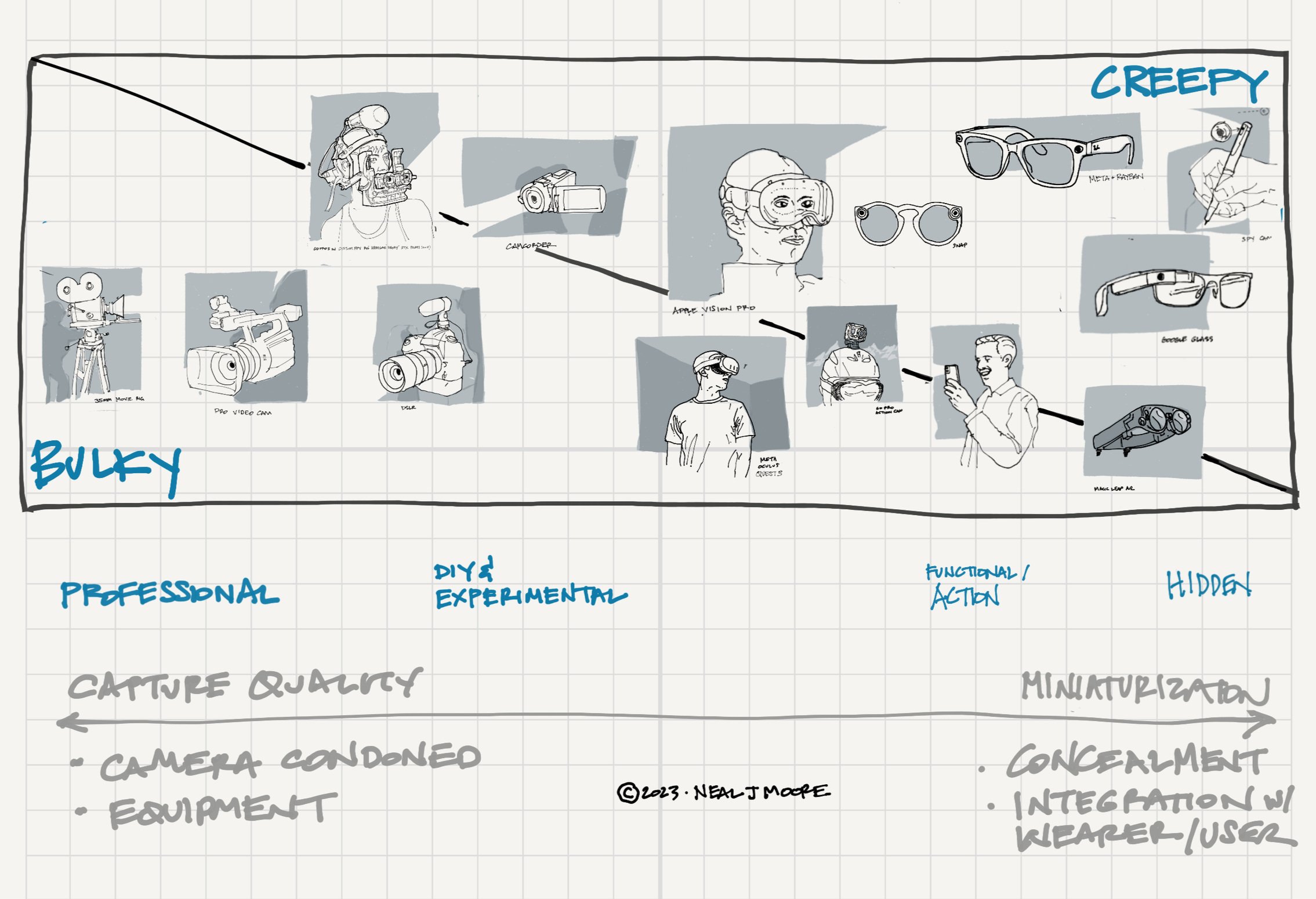Apple Vision Pro: Too Big to Fail?
Part IV in a series exploring strategic implications of the Apple Vision Pro
…and the question:
Will Apple change videography again?
The Apple Vision Pro is a classic beautiful Apple first-gen stunner. It’s heavy, but made sleek by design, and we know it’s just going to get thinner, sleeker, speedier, and more colorful. We can guess at the roadmap: The Pro will stay pricey. Professional artists and filmmakers will use it. The power cable will go away and battery life will go up. The features will be pruned for price and volume. There will be white, silver, gray, black, and then colors. The store will carry interchangeable straps. That is, if Spatial Computing takes off in a way that Virtual Reality has not despite the money thrown at it. And it might: Apple wasn’t first to market with music players, phones, computers, smartwatches… best beats first.
Also predictable: There will eventually be a thin, light Air model, maybe with no top strap, or strap that’s lighter as the device itself shrinks. Will they take it all the way to eyeglasses, like the Snap and Meta products? With a form factor that’s more like a pair of eyeglasses, maybe the Geek Dad wearing a Vision Pro would be less like a Black Mirror episode, but it presents other issues.
For those speculating that the end form factor will be a spectacular set of Apple Vision spectacles… hold on.
The space goggles may be around for a while, even if the miniaturization and transparency is feasible. Why? Because we are uncomfortable with cameras we can’t see. Spy cameras disguised as pens. Cameras embedded into eyeglasses. It’s those little quiet ones we worry about.
For decades we’ve been able to consent to a visible handheld camera in our midst.
When a camera is as bulky as a traditional SLR or the Vision Pro, we all know it’s there, and we can agree to it, or we can voice our dissent. In a professional context like filmmaking, that’s fine. Actors can ignore the camera; birthday party attendees, maybe not. When it’s miniaturized and we can’t see it, we’re more likely to be wary of being recorded without consent. Again, those who consent are typically in a professional context. There are reasons why the Google Glass failed, but the stealth recording factor was a big one.
IMAGE: Bulky-creepy slider bar chart showing Google Glass on one side (80% creepy) and Vision Pro on the other (80% Bulky) as well as a Panavision 35mm vs a spy camera in a pen. An old camcorder would less creepy than Vision Pro. Meta’s Ray-Bans and Snap’s specs are closer to Glass.
So maybe, by being too bulky to be creepy, Vision could succeed where others have (so far) failed?
The upshot is that Vision Pro could become an exciting video capture tool for professionals who can get around the bulk and who can pay for the device, and for the massive upgrades in computing required to edit the memory-intensive recording. Apple has that ecosystem: capture with Vision, edit with Mac or iPad, share with iMessage, and store with iCloud, and view on compatible Apple devices.
Apple also has the ease-of-use experience. If all you have to do is put this thing on. Hit the record button and go, and then hit “Share”, that will be huge. Sharing these videos will be technically non-trivial, but they’ve already promised that Grandma can use her iPad to see at least some of that birthday video recorded by Geek Dad’s Vision Pro. Apple has already put a camera in everyone’s pocket that they actually use. Let’s see if they can put one on some faces. I think that like GoPro, it will be adopted by and bring people into an active creator base (‘prosumers’ like Youtube creators), but I’m certain we won’t see it dangling around tourists’ necks at the Golden Gate anytime soon.


